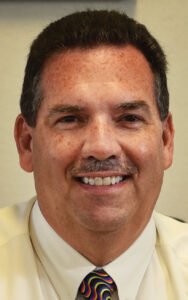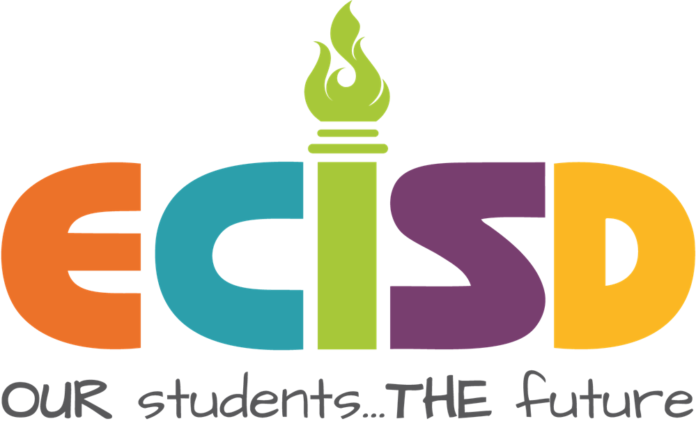Ector County ISD Superintendent Scott Muri says good financial stewardship puts the district in a position to put a $400 million bond up for a vote that would not include a tax increase. However, voters still need to approve it in November.
Over the last several years ECISD has made moves that saved taxpayers $26.9 million in future interest payments, according to the district, Muri said.
“We have approximately $400 million in what’s called bond capacity, which means we have the ability as a system to go out and capture and really sell $400 million worth of bonds without raising the tax rate because the current tax rate has the ability to pay off $400 million worth of bonds,” Muri said.
The reason ECISD is in this position, he said, is because of the good stewardship of the board of trustees.
“Over the last three years they have maintained the current tax rate at $1.17, so they haven’t raised taxes the last four years. They have also paid off bonds early, and so much like in your own personal life if you have a mortgage, you sometimes have the ability to make an early payment or two. Over the last three years we’ve been able to make some early payments, if you will, and we’ve actually saved approximately $25 million just in interest … and will do that again this year,” Muri said.
“We will make another early payment this year that will save even more money in interest on the bonds we have. … All of that work has created this opportunity for us to again have a bond that’s under $400. Again, it’s got to be under $400 million that would not require a tax rate increase,” he added.

Muri said the closest thing to explain bond capacity is when you buy a new car.
“… You go to the car dealership and you sit down with the car dealer. You talk about how much you can afford as a consumer. That’s based upon your income. It’s based upon your debt; all of your money factors, if you will, go into how much you afford,” he said.
“The same thing with a home; how much home can (you) afford again based upon your income and your savings. That’s bond capacity. How much can we afford in this case … without raising taxes,” Muri added.
If they go beyond $400 million, the district will have to ask people for more money.
Asked why this wasn’t suggested before, Muri said they didn’t have the bond capacity.
“What we’ve been doing over the last three years has done it. In the last bond, we had some capacity, maybe about $100 million of capacity, but that’s not enough to do the kind of work that we need to have done. So we’re at a very different place right now financially,” Muri said.
He added that this would not affect district operations.
“We have two pots of money so when you write your tax check to the district, you write one check. But the money goes to two separate pots. One is the maintenance and operations pot. That’s by far the largest. That is our day-to-day operations — everything from salaries to the maintenance of our facilities to paying the electric bill, etc.,” Muri said.
“The other side is debt service. That’s the I&S (interest and sinking) side. It’s a much smaller portion of your taxes. About 19 cents of your taxes goes to the I&S side. So that pot of money can only be used to pay off debt. That’s its only purpose … The maintenance and operations is unaffected by this,” he added.
The maximum amount the debt service side can be is 50 cents.
At the last bond committee meeting April 13, he said people were very interested in this opportunity.
“We’ve never been here financially before. Most people have never heard of this. It’s never been a reality for us. In my last district in Spring Branch, we did a bond. We had $1.2 billion in bond capacity, so we did a $900 million bond there, but had the ability to do $1.2 billion without a tax increase. In this district for the first time it’s $400 million,” Muri said.
They still have to educate people about it because it’s so different.
“It is new and will require us to educate our community and what this means for them. It’s a pretty incredible opportunity,” Muri said.
He added that after ECISD makes another payment this year its bond capacity in the fall will be even more.
“Let’s say as a community we get on a five-year bond cycle. With good stewardship potentially in another five years we’ve developed even more bond capacity, so potentially the community could do it again five years down the road,” Muri said.
The five-year bond cycle is what Muri had been aiming for.
“We need to be on a five-year bond cycle as a community. Our schools, especially with the age of our buildings, our schools are in need of constant repair. We’re getting to the replacement age. Half of our buildings are 61 years of age or older, and so the number of buildings that are going to need to be replaced over the next 10, 20, 30 years is significant. … We have to begin to take a bite out of all of that one piece at a time,” Muri said.
“It’s a real win for our community, and again to your point, it will require us to educate people in exactly how this works and how we’re able to do this because it doesn’t make sense. It kind of defies logic, but it is our current situation and we’re pretty pleased with that,” he added.
This week Muri and board members President Steve Brown, Delma Abalos and Tammy Hawkins are in Austin.
“We’re talking about two things with our legislators this week. One is school funding. The state has a $32 billion surplus and we want to make sure that public education is funded appropriately in the state of Texas,” Muri said.
“We’ve run some preliminary numbers for school districts across Texas and an early look indicates that our district would only receive an increase of $4 million. That’s about a 1.5 percent raise for our employees. That’s not enough in a year in which our state has a $32 billion excess. For our school district to only receive $4 million increase just doesn’t make sense. It defies logic and so we’re here to make sure that part of that excess is floated to public schools,” Muri said.
“The second one is accountability. Tomorrow (April 20), in fact, the House will be talking about several accountability bills that would adjust the current accountability system, make some adjustments to the STAAR test, make some adjustments to the way that we think about holding our schools accountable. Some of the recommendations are very favorable and would be really good in our environment so we’re here to support some of the bills that are in play tomorrow (April 20),” he added.
Muri said district costs for utilities such as water and electricity have increased, along with insurance and costs for employees and their families.
The amount the district gets from the state.
“It varies drastically from year to year, but this one is a bit shocking. I’ve lived here for seven and a half years … I’ve never seen this kind of money available for our state, and yet the amount that we’re receiving, it just doesn’t make sense. We want to make sure that our representatives and our senators understand how this translates to a local school district. They’re thinking about much larger numbers, but in reality, it’s just not enough; a 1.5 percent raise for our employees is not enough,” Muri said.
Bond projects being considered by the bond committee:
1. Transportation Requests (65 votes): $37.45 million
Bus purchases – $2.45 million
New Transportation Facility – $35 million
2. New CTE Facility (58 votes): $80 million
3. New High School (57 votes): $320 million
4. (Tie) Fine Arts Requests (52 votes): $18.5M
5. (Tie) Priority 1 and 2 Facility Improvements (52 votes): $130 million
6. New Middle School (48 votes): $120 million
7. Athletics Requests (43 votes): $11.1 million
8. Technology Requests (34 votes): $23.5 million
9. Repurpose/Renovate Existing Elementary Campus (28 votes): $24 million
10. New Elementary School (25 votes): $65 million
11. New Ag Farm/Ag Farm Upgrades (21 votes): $9.5 million
12. Priority 1 Facility Improvements (20 votes): $51 million
13. New Transition Learning Center (15 votes): $8 million
14. Priority 3 and 4 Facility Improvements (8 votes): $735 million
15. Replace Bonham Middle School (5 votes): $120 million
16. Replace Ector Middle School (4 votes): $120 million
17. New Teacher Professional Development Center (2 votes): $24 million




